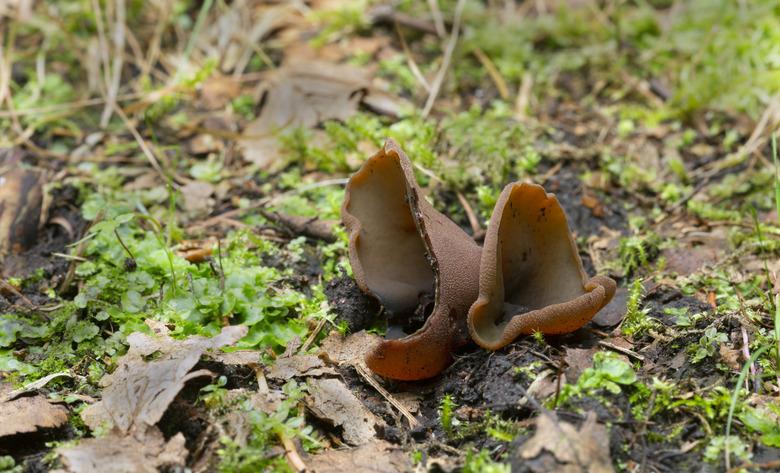How To Kill Cup Mushroom Fungus
We may receive a commission on purchases made from links.
Cup mushrooms (Peziza domiciliana), also known as domicile cup fungus, are a common fungi that afflict lawns. They are not harmful to plant life, but some gardeners find them unpleasant to look at, with their upturned, cup-shaped tops. They are may be dangerous if children and pets eat them.
There may be many different kinds of mushrooms growing in your lawn so be sure to identify them correctly. To rid your lawn of these cup fungi, use cultural management to make growing conditions inhospitable.
Fertilize Your Mushrooms to Death
Fertilize Your Mushrooms to Death
For established fungi living on buried or above-ground organic matter, such as a buried log or a tree stump, overfertilizing may prove effective in killing mature mushrooms. The amount of fertilizer needed depends on the quantity of nitrogen.
You need 1 pound of nitrogen per 1,000 square feet of lawn, or 1/10 of a pound for 100 square feet. Use a high nitrogen, water soluble fertilizer that is not slow-release and apply it directly to the mushrooms. Do not apply more than once every two weeks, as too much nitrogen can also harm your lawn. Fertilizer can be applied any time during the growing season, but choose a period with little precipitation to avoid washing away fertilizer.
Reduce Organic Matter
Reduce Organic Matter
The amount of decomposing organic matter can affect the growth of cap mushrooms. Tree stumps and buried logs are common sources of fuel for fungi and can increase your chances of developing cup fungi. Removing these will prevent or stop mushroom growth.
You can also use a high-nitrogen fertilizer directly applied to stumps and other difficult-to-remove organic matter, to hasten the decomposition process. For organic matter that has already started decomposing, applying fertilizer once should be sufficient. Use 1 cup of undiluted fertilizer for every 6 square inches of organic material. For large branches or logs, remove the logs from your lawn as soon as they become apparent so that the fungi do not have time to take root.
Reduce Soil Moisture
Reduce Soil Moisture
Too much water on the lawn is not good for the grass. In addition, it can lead to the damp growing conditions that are ideal for cup fungi. Instead, water infrequently but deeply, a practice that encourages grass to develop a deep root system. This reduces water buildup in your lawn or garden.
For gardens, apply a 3- to 6-inch thick layer of mulch each year to reduce the chances of having a sodden garden bed. Add compost to your soil before planting in your beds to improve overall soil structure. This minimizes the chance of compaction over time.
To reduce current soil compaction of your lawn, aerate it regularly. Do this in early fall for cool-season grasses and in the late spring for warm-season grasses. Thatch — dead grass that collects at the soil surface — leads to water retention, which can increase soil moisture. Dethatch your lawn at the same time as you aerate.
Prune Shade Plants
Prune Shade Plants
Cup mushrooms prefer cool, shady growing environments. To minimize shady conditions, regularly trim your trees and other shade plants. As a general rule of thumb, only cut off smaller branches — less than 2 inches in diameter — and do not take out too much at one time. Removing more than a quarter of a tree's total leaf-bearing branches can be detrimental to the tree's health.
Note that trimming shade trees will not reduce or kill mushroom fungi on its own. This maintenance technique should be used in combination with other lawn care methods.
